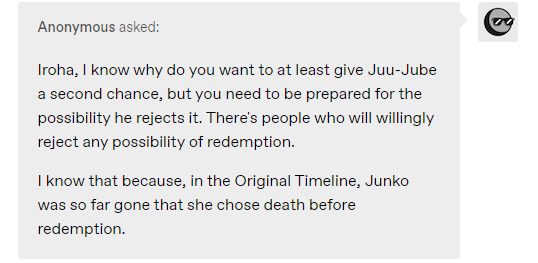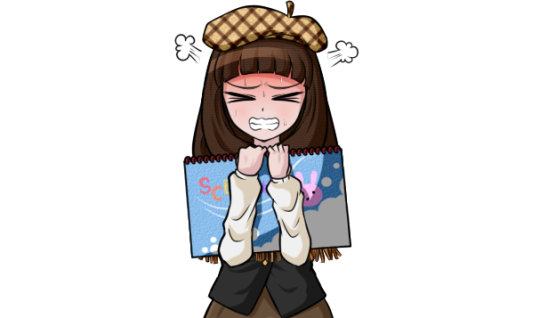#neo aum
Explore tagged Tumblr posts
Text



"The Empire will vanish and all its good with it. Its accumulated knowledge will decay and the order it has imposed will vanish."
17 notes
·
View notes
Note
There is also plenty of real-life cults that practice nazi mysticism and similar things that are as close to "religion of evil" as you can get in real world, and they have political ambitions and sometimes engage in terrorism. Aum Shinrikyo, Ynglism, ariosophy, particularly racist neo-pagans, Breivik's Knights Templar, the list goes on. This is not culturally Christian satanic scare, that's reality.
What popular fantasy really misses is that it makes cults of "good" deities absolutely benevolent and legit in the way Christian church wants to look like. They should all be cruel high-control groups that worship entities that don't exist at best and are malicious at worst.
question: Why is it bad that cultists are a common enemy in Dnd? Have you *met* anyone from the Catholic Church, the ILBP, the Mormon Church, etc?
I mean D&D cultists don't really lean into an understanding of cults as manipulative groups led by a charismatic leader, they lean more on a very American Evangelical understanding of cults as these secret groups within good society trying to make good people do bad things like sacrifice puppies for Satan. Comparing D&D cults to modern religious movements misses the point because D&D cults don't have anything to do with those but are based on a very culturally Christian fever dream about secret satanic groups hiding within the populace. With a dash of orientalism, since the imagery of cultists in D&D owes heavily to classic swords & sorcery fiction, which was rife with orientalist imagery.
And I'm also not saying that that's necessarily bad, because I don't think engaging with media with iffy ideas in it will automatically make people catch moral impurity, that's silly. But it's good to have an understanding of where those ideas and images come from because if one wants to personally avoid replicating those tropes and themes then it's good to be aware of all the cultural context behind them. D&D cults have very little to do with modern cults, because that's not what they're based on, so to compare them to those misses the point wildly.
(Also this relates to people's attempts to make D&D queer, because with a lot of people what they do is just turn the player characters into a wholesome queer found family but otherwise change nothing about the game, so you get the cool heroes slaughtering cultists that are ultimately based on a very American Protestant image of Satanic cults, and the dissonance is weird and a lot of people don't realize it.)
873 notes
·
View notes
Text
2023/02/28 English
BGM: Wes Montgomery : Days Of Wine And Roses
Today was a day off. This morning I went to AEON and read Yoshio Kataoka's "Coffee calls" with Wes Montgomery's music. Suddenly, I had an idea, "what on earth I am doing here?". Indeed, I basically like reading, but I am just doing this hobby only and not have any family or kids. My life is just wandering from here to there, so it made me down. But then, I should think that the people who are not "productive" can't be there in this world? How about the people who aren't working, or can't work and sometimes treated as a waste? Me, once, I was certainly a NEET, and that situation gave me a certain serious pressure and got sick from that. I want to think that we can live without any productive attitude, and also enjoy our lives, primary.
When I was a college student, at the season that springtime exactly was coming like now, I had a strong depression. It was too early for job hunting, and I couldn't find any good part-time job, so (it was embarrassing but) I relied on my parents' money and did nothing but hangout the whole day, getting bored too much. Now I think that I would go traveling, fishing, or choose to read Marcel Proust's "In Search Of Lost Times" if I had such a boring time. Anyway, I felt a crisis of feeling, "what on earth I am doing?" and had a depression. I entered a university, but I needed to have another, quite a different tactic to survive, and I couldn't find it. It was a really hard time.
At that time, we had a large incident with AUM and I wondered "how should I live this life?" and "what could be the best life for me or this world?". Now, I have found some answers through this life. But anyway, life is basically long, so sometimes people can wonder what they are doing or what they want to do. I am also a lost person. Reading was for me the way to measure myself. Once, in a room of my apartment, I was into Paul Auster's "Moon Palace" and thought about how the main character's fate and his feelings could be. These ideas bring me that I should read Souseki Natsume, a Japanese legendary author who wrote about that kind of "a stray sheep", again. Or I might choose Charles Bukowski.
This evening, I went to the English conversation class. Today, we had a topic that the teachers got injured by skiing, and talked about "how can be the difference of the system of health care". It was really difficult because I have never learned about the system of American health care. I also showed how I don't know about "Obama care". I have to admit this. Once I had my mind closed and just drank a lot every day, so can't remember those miserable days. I can't even remember 3.11 and Fukushima. What a shame... but I said that "American society is based on capitalism, so doctors developed their service for the rich people", "It might be influenced by Neo-liberalism with the motto of 'Only the strong survive'", and "Japan has the tradition of helping each other and we Japanese achieved great safety net". Oh my, what an easy-going like Junji Takada, a Japanese famous comedian.
0 notes
Video
youtube
How Capitalism Destroys Radical Movements
Movements like Black Lives Matter often start out as radical demands for change, but someone along the way they get consumed, defanged, and turned into meaningless symbols. How does this happen?
Citations and Further Reading:
1) Guy Debord/The Spectacle/Recuperation https://youtu.be/RGJr08N-auM https://youtu.be/_wl3HCKQ6WI https://en.wikipedia.org/wiki/Guy_Debord https://en.wikipedia.org/wiki/Recuper...) https://en.wikipedia.org/wiki/Situati... https://en.wikipedia.org/wiki/Spectac...) http://www.bopsecrets.org/SI/report.htm https://en.wikipedia.org/wiki/Report_... https://en.wikipedia.org/wiki/Officia... https://doi.org/10.1177/0309816818759231 https://theanarchistlibrary.org/libra... http://dl.uncw.edu/Etd/2012-1/perdued... https://scholarworks.calstate.edu/dow...
2) Black Lives Matter & Defund the Police https://twitter.com/AC360/status/1270... https://docs.google.com/document/d/e/... https://cfo.dc.gov/sites/default/file... https://www.washingtonpost.com/local/... https://web.archive.org/web/202006220... https://www.npr.org/sections/live-upd... https://dcist.com/story/20/08/18/dc-m... https://newrepublic.com/article/15810... https://polsci.umass.edu/sites/defaul... https://breachmedia.ca/beware-the-neo... https://www.theverge.com/2020/6/8/212... https://edition.cnn.com/2020/12/02/po... https://dcist.com/story/20/08/14/blac... https://www.newyorker.com/culture/dep...
3) Antonio Gramsci & Hegemony https://youtu.be/-LI_2-qsovo https://warofposition.com/94 Capitalist Realism https://en.wikipedia.org/wiki/Capital...
9 notes
·
View notes
Note
I mean... I think Iroha is using the same logic on Mukuro as she is on Juu. Mukuro to many is the twin sister of Junko and a complete monster like her. But Iroha, having grown up in a highly abusive household, can see that Mukuro is ultimately the biggest victim of Junko. And...Kyoko you KNOW Iroha is going to bring that topic up with you, that she wants to redeem Mukuro and have her turn against her sister. Something that even Kasugano is not going to approve of.




Of course I know who she is. And you all have a point.

But even then, and I mean you no disrespect, Iroha-san, but you haven’t seen what Ultimate Despair does. You have no idea what kind of corruption it visits upon people, what it forces them to endure and how deeply it entrenches itself in their minds.

And unlike what happened after The Tragedy, we don’t have the Neo World Program to help us undo the damage.

So, what then? Do we just kill them?

I’d prefer that we didn’t...but if we don’t have any other choice.

But...wh-what about Kinjo Tsurugi? That’s his dad you’re talking about! He doesn’t know about any of this. W-Wouldn’t it be better to just...y’know...put the guy in a cell first and explain what’s happening?

Yes, of course it would. I’m only saying that if we have no other choice, if he makes it clear he will not accept being imprisoned we have no way of rehabilitating him-

Then we find a way. You don’t just give up on someone like that.

“Someone like that” is otherwise incapable of changing. Believing that we can just find a way to change them, especially after everything you’ve seen, is unbelievably naïve of you.

…You know, I used to not care what happened to others, just as long as I was fine. My biggest priority was always me. Me, me, me, me. And people- a little boy- got hurt because of it.

I admit it, I was a coward. And maybe I’m not that smart, and maybe I’m just a dumb teenager or whatever else you wanna call me...

But don’t call me naïve. Ever. I’ve seen things you wouldn’t believe. I grew up with some of the most hateful, cruel parents you could ever possibly imagine. And I know what kind of person I could’ve been if I screwed up, and not only do I never wanna go down that path because now I have people who care about me, I never want anyone else to either!

And what’s wrong with that?! What’s wrong with believing people can be better?! Are you afraid to believe in people?! Or is it because, if someone does something awful, you want something awful to happen to them too? Maybe that’s the problem!

Maybe the reason why people like Kinjo Juu or Ikusaba Mukuro turn to despair was because they had nobody else. When the future looks dark and they have nobody to help them, of course people are gonna turn to something out of desperation! Why do think Aum Shin-whatever got started?! And what do we do? We punish them for it. If you really think making them hurt worse for the bad things they did just because you wanna feel some sense of justice, maybe you’re the naïve one then!

…

…Wh-Whoa, um...sorry, didn’t know I was holding that in.
#danganronpa#sdra2#Super Daganronpa Another 2#dr1#danganronpa thh#kyoko kirigiri#iroha nijiue#a student out of time#DR#Die Free or Live Hard arc
12 notes
·
View notes
Text
What exactly Neon Genesis Evangelion was doing with Christianity is debatable. Personally, I think there is a deliberate paralleling with Gnosticism, the apocalyptic War Scroll of the Qumranite Essene Jewish community, and the syncretic Christian/Pagan chivalric mythologies surrounding the Holy Grail with the Britons and the Spear of Longinus in Austria that has so fascinated New Age conspiracy theorists to convey the big theme of the Human Instrumentality Project and the secretive interests surrounding it. After all, if the Human Genome Project throughout the 1990s was popularly referred to as the “quest for the Holy Grail”, a project to instrumentalize and control people is anticipated to follow exemplified by the toxic abusive relationship between Gendo and Rei, his genetically enhanced daughter cloned from his wife who died or otherwise escaped from him.
With anime and Christianity, I notice four basic tendencies, to which one can pick two or three in any given series.
1. Sexual fetishism. The cumulative potential of the Christian discourse on the themes of the flesh and martyrdom, and all clothing and practices pertaining thereto in the past, present, and future for a tension-filled sexually charged presence and BDSM imagery.
2. Christian allegory. Particularly prominent in film noir and its futuristic sci-fi descendants like cyberpunk. Encounters with worlds of corruption and characters alternatively seeking paths of redemption and justice or tragically striving for the powers of evil that will bring about their downfall according to their hamartia (tragic flaw or sin) lend themselves to this thematic imagery.
3. Gothic anticlericalism. In the gothic literature of a Protestant North that darkly romanticized a Latin South, one major tendency of works like The Monk by Matthew Lewis to characterize Catholic-majority lands as rife with superstition barbarism fueled by clergy who hide terrible wickedness behind a mask of piety. Not infrequently a mode of projection to cast out the evils within the society producing the gothic work into the scapegoated Other. Japanese anime commonly uses such Christian clergy in this way to cast upon domestic concerns about cults like Aum Shinrikyo, the Unification Church, and Soka Gakkai, and about negative experiences like excessive charges for Buddhist funerals.
4. The European/Christian mystique. Since the big boom in shoujo manga in the 1970s, one prominent tendency in Japanese pop culture is a kind of narrative escape from Japan into Europe or Europeanized places (i.e. boarding schools). Christian imagery and people can be a cultural extension of this, to the point Christian characters can operate as outsider magicians taking on functions Shinto or Buddhist characters couldn’t. This association typically locates Christianity outside Japan in multiple senses.
In America, we have the misfortune that the religious fanatics cast out of British society into the peripheral backwoods of the “New World” colonies were optimally positioned to define what this country would come to be in many ways. Such tendencies were amplified by the religious right becoming the loudest and most powerful voices in American Christianity in terms of refusing progressive reform in favor of a fascist scramble to seize power and impose itself by force. So many have come to experience it as the face of abusive domestic micro-fascism.
This lends a certain emotional appeal to the gothic anticlericalism side of anime, particularly as American media may be reticent to risk direct confrontation with the religious right. But this narrative possibility comes at the expense of amplifying the marginalization of a religious minority that has a history of being persecuted with extreme violence by the Neo-Confucian Tokugawa Shogunate. During the Fifteen Year War (1930-1945), the Empire of Japan sought to impose State Shintoism with the associated imperial cult over colonies like Korea, which resulted in more martyrdoms in the midst of a wider necropolitical context of mass murder and rape, forced labor, opioid trafficking, and unethical experimentation in Unit 731′s biological and chemical warfare program.
Philip Jenkins’ book The Next Christendom: The Coming of Global Christianity argues the locus of Christian faith in the 21st century has already shifted from Europe to Africa, Asia, and Latin America. In this sense, the more anime and other Japanese media define Christianity in terms of the exo, the outside of the “exotic”, the more other Asian ethnicities like Koreans, Filipinos, and Chinese stand to be marginalized and discriminated against. In recent memory, the horror anime Housing Complex C illustrates this concern in terms of escalating conflicts between elderly Japanese holding Shinto/Buddhist/Confucian ideas of purity and pollution and young Muslim migrant laborers targeted for scapegoating by a hostile party.
There is, however, another set of possibilities for the appeal of Christian elements in anime. Attraction to Christian characters or characters associated with Christian imagery in terms of sexual fetishism is what it is. As I think about the English dub for Ghost Stories that turns its Christian mystique character into a more familiar American evangelical bigot of the Bush era, it occurs to me this underscores what is not being said through this act of interpolation. In other words, Japanese pop cultural fantasies about Christianity show that other Christianities are possible.
For example, I think that much of the appeal of Maria Watches Over Us rests in terms of how the Catholic girl’s academy creates an alternative society from mainstream Japan. While Japan still does not recognize gay marriage and legally marginalizes queer identities from families, within the academy the sœur system of fictive kinship between self-declared “sisters” creates a system in which first loves between girls are publicly recognized and accepted. This love between the protagonists is to be symbolically begun before the very statue of the Virgin Mary.
Raise your hand if the exotification of Christianity in Japanese media has always held a weird appeal to you as a non-Christian.
Every time a video game or anime goes "lol this shit is weird I'm gonna flex on it and use it for evocative but shallow aesthetic reasons" it's like getting a little vacation into a world where all that shit is acknowledged as unsettling and weird. It's such a relief.
As much as we poke at shit like Evangelion for doing this, it's a bald-faced lie to pretend that seeing the dominant, domineering religion many of us are stuck in the shadow of treated like that isn't a delight.
346 notes
·
View notes
Text
Bizarre entry to Moon’s orbit as empire fell and a cult flourished

Hamish McDonald
Asia-Pacific editor, Sydney Morning Herald
September 8, 2012
To Moscow with the Moonies! Of all the assignments that can come in a reporter’s career, this had to be the weirdest.
Across my desk at the old Far Eastern Economic Review office in Hong Kong in early 1990 came a letter inviting me to speak at the forthcoming World Media Conference in Moscow, all expenses paid.
It was clear from back-up information that this was ultimately sponsored by the Unification Church. Indeed its founder, the Reverend Sun Myung Moon, would preside in person.
Quibbles about dubious sponsorship were set aside by my boss: this was a genuine news event, one of the more bizarre conjunctions happening as the Soviet system unravelled after the fall of the Berlin Wall.
On arrival at Moscow’s international airport, Moon’s guests were ushered into a shabby VIP room with an equally dubious collection of VIPs, including several former Latin American dictators, the widow of Egypt’s president Anwar Sadat and a former vice-president to Ferdinand Marcos in the Philippines.
At the Slavyanskaya Hotel, fellow delegates proved an eclectic mix. The most engaging company at the breakfast buffet was Nikolai Tolstoy, a British author of wartime history and a descendant of Russia’s greatest writer, and Sir Alfred Sherman, a lively London political gnome who had been a trusted adviser to Margaret Thatcher.
At the opening session in the main hall, some of America’s most fiercely anti-communist commentators and think-tankers filed in. This was a gathering of hawks in the very heart of the “evil empire” – there to watch its downfall. Some did not trust their eyes, wondering aloud if they were being inveigled into a Soviet front organisation.
Moon and his wife greeted delegates in a reception line. His handshake was perfunctory. The eyes in the granite face barely made contact. If he was the new messiah, it wasn’t much of a blessing.
Rising from a vast podium, Moon began a sermon. It went back to basics in his theology, starting with the original sin, which he said was Eve’s illicit sex with Satan, the unfinished mission of Jesus that Moon himself had taken up by forming the “perfect family”, and the ongoing battle with Satan that would end with Armageddon, fought roughly along the 38th parallel between North and South Korea.

As it went beyond an hour, Moon’s audience of Cold War warriors gazed fixedly at different points of the ceiling, not catching anyone’s eyes.
Next morning in the breakfast line, one of them quipped: “I gotta say, I was rootin’ for Satan.”
My turn to speak came, after a former Japanese vice-minister of transport suggested a network of highways around Asia, so that perfect families could motor over to see one another. I gave a rundown on current Asian affairs. The audience dozed. A few journalistic colleagues smirked.
After the conference, I went on a tour of the Soviet republics in central Asia. Russian settlers gathered fearfully in their nomenklatura clubs and hotels, getting drunk and dancing the lambada. In Ashkhabad, Ukrainian missile officers shared gassy Georgian champagne and wondered in which army they would be the following year. In Samarkand, local Aeroflot pilots filled me with vodka and put me on the flight back to Moscow.
When I arrived, the May Day parade in Red Square had become a shambles, the crowds waving the Russian tricolour and imperial double-headed eagle instead of the hammer and sickle.
With this notch in his pulpit, Moon was on his way to the final stage of his crusade against communism. A year or two later, he visited Pyongyang to meet Kim Il-sung, founder of the Democratic People’s Republic of Korea, the lifelong political satan in the Moon world view. Kim gave him a licence to set up a car assembly plant.
“They were reconciled,” says Leonid Petrov, a Korea specialist at the University of Sydney. And why not? As Petrov notes, Moon’s “cocktail” of religions and ideologies – Christianity, Confucianism, shamanism and anti-communism – was a mirror-image of Kim’s Juche (self-reliance) mix of nationalism, communism, neo-Confucianism, and Korean nativism.
Both played heavily on the Korean dream of national reunification. Moon was to claim Kim nominated him as the one to bring the two halves together. When Moon died this week, aged 92, it still hadn’t happened.
Cults flourish when empires weaken. In 19th century Korea, as European powers and Japan forced the hermit kingdom open, there was the Tong Hak (Eastern Teaching) movement, which became fiercely anti-foreign, like the Taiping and Boxers in neighbouring China.
Moon’s church grew in a Korea humiliated by 35 years of Japanese annexation, then ravaged by the vicious Korean War. It was one of the exotic faiths, including even Japan’s Aum Shinrikyo (which carried out the 1995 sarin gas attack in the Tokyo metro), that were taken up by some Russians in the “crisis of faith” as communism collapsed.
Moon was a prominent lobbyist for South Korea’s military dictator, Park Chung-hee. Moon’s jail term in the US for [document fraud and] tax evasion was seen as a kind of martyrdom by his followers, and a badge of honour among many American neo-cons.
Criticising him was risky. A skinny Presbyterian theology professor, Tahk Myeong-hwan, who set out to expose Moon and other cults, was arrested many times. I am told Tahk was found murdered [outside] his apartment more than a decade ago. He would have angered many fanatics, not just the Moonies.
South Korea is now a prosperous, wired society, where the past that nurtured Moon and the Unification Church is a foreign country for the young. That country still exists across the 38th parallel.
What strange flowers of belief will emerge there, in North Korea?

Strange flowers of belief ... Unification Church founder Reverend Sun Myung Moon.
_______________________________________
A representative of Rev. Sun Myung Moon offered a Russian minister $1 million as a personal gift to distribute Moonie textbooks
My experience within the hierarchy of the Moon cult during its years of expansion in Russia and in the CIS
Press Release on the FFWPU by the Department of Communication, Nizhny Novgorod province, Russia
Testimony of Tahk Myeong-hwan who was murdered
World Domination – Sun Myung Moon’s many attempts ended in failure
1 note
·
View note
Text
Monsters We Made
(A starter for @verratenduo How had it happened, how had the world he once knew been swallowed up so quickly? A doomsday bio-terrorist cult, Neo Aum Shinryko had unleashed a devastating virus upon the population of Earth, it killed by shutting down higher brain functions but the unintended side-effect was reanimation, bringing the dead back to life. Only the recently deceased, or those killed by the zombies. The zombie population exploded as urban areas and city centres became pure chaos, the dead outnumbering the living as the religious groups called it the end of the world. The military were overrun. Shooting them in anywhere but the brain did little to slow them down, you could use machine-gun fire to rip them in half but the top part would still be active, still dangerous. All it took was bodily fluid, saliva or blood to transmit the disease. There was no cure, the disease was 100% fatal and had a 100% chance of reanimation. The survivors were the lucky few who had the skills required to survive anything and didn't over-focus in one aspect. Saburo was in a band of survivors, as a doctor in biology specializing in virology, he was invaluable in defeating the zombies by analyzing their weaknesses, he was no closer to a cure but he did have several ways of slowing them down and he raided a lot of chemistry labs, including a masking scent that stopped zombies from smelling them. They were in an abandoned military base that had been left when the soldiers were called to the city, they never came home. The team of 10 had worked on fortifying it and deterring zombies which were few and far between, the group unaware of the nearby danger as Saburo cooked the pasta with the carbonara sauce, the base was self-sufficient and they were in semi-regular contact with the army via satellite uplink twice a day. “Miltary uplink in ten.” Saburo reminded everyone.
4 notes
·
View notes
Text
Indian fintech to hit $ 200bn in revenue by 2030: Report
Indian fintech to hit $ 200bn in revenue by 2030: Report
Bengaluru : Indian fintech will touch $ 1 trillion in assets under management ( AUM ) and $ 200 billion in revenue by 2030, according to estimates by VC firm Chiratae Ventures and EY. A report by the two firms said the growth will be driven by the digital lending space which is expected to grow to $ 515 billion by 2030. It said payments, digital lending, wealth tech, insurance, and neo-banking…

View On WordPress
0 notes
Text
Indian fintech to hit $200bn in revenue by 2030: Report - Times of India
Indian fintech to hit $200bn in revenue by 2030: Report – Times of India
BENGALURU: Indian fintech will touch $1 trillion in assets under management (AUM) and $200 billion in revenue by 2030, according to estimates by VC firm Chiratae Ventures and EY. A report by the two firms said the growth will be driven by the digital lending space that is expected to grow to $515 billion by 2030. It said payments, digital lending, wealthtech, insurtech and neo-banking will all…

View On WordPress
0 notes
Text
Due to regulatory policies, its ETPs are only currently trading on European exchanges. On Wednesday, DeFi Technologies announced that its subsidiary Valour reached $274.2 million in assets under management. The company offers various cryptocurrency-denominated exchange-traded products, or ETPs, listed on European exchanges.Cointelegraph previously reported that Valour launched two such ETPs involving Uniswap (UNI) and Polkadot (DOT) last year. For each exchange-traded product of Valour that is bought and sold on the stock exchange, Valour purchases or sells the equivalent amount of the underlying digital assets. Some of the ETPs do not charge management fees.The firm's ETPs include $95.2 million in BTC Zero, $67.4 million in ETH Zero, $43.4 million in ADA Valour, $24.4 million in Valour DOT, $38.5 million in SOL Valour, and a small number of funds in Uniswap (UNI), Terra (LUNA) and Avalanche (AVAX). The total sum represents a growth of 91% compared to its total AUM of $143.5 million in May of last year. Regarding the development, Russell Starr, CEO of DeFi Technologies, commented:"Our team has done a tremendous job of planting seeds for future growth by launching eight ETPs across several exchanges in Europe that enable individuals and institutions to invest in digital assets. [...] We are very excited about the company's growth trajectory."DeFi Technologies seeks to facilitate investors' access to namesake decentralized finance via its ETPs, venture investment and infrastructure arm, which provides governance for blockchain networks to run independent nodes. Its shares are publicly traded on Canada's NEO Exchange. Go to Source
0 notes
Text
Bài học luân hồi của cụ Nguyễn Đình Chiểu
(18/2/2019) MỘT VÍ DỤ CỦA SỰ MỞ LÒNG
(giao tay lái, biểu leo cầu thang & tiếng nổ vô thanh)
Mở ra lớp học về cuộc đời của cụ Nguyễn Đình Chiểu

***
CÓ THỂ NÓI, đây là lần đầu tiên tôi mơ thấy mình tiếp nhận tâm thức và bài học cuộc sống của người khác.
Sau này tôi mới hiểu vì sao lại như thế. Đơn giản thôi, vì đây là một người có đức tin và có bề dày thực hành đều đặn thiền niệm ám thị tích cực.
Khi người ấy gặp vấn đề nan giải, người ấy dành thời gian để cầu nguyện.
Khi người ấy cầu nguyện, Ơn Trên nghe thấy, và tôi nghe lóm được.
Khi người ấy cầu nguyện, Ơn Trên liền ra tay thâm nhập tìm hiểu căn nguyên của vấn đề, và tôi khi ấy đang ở trong tâm thức của Ơn Trên nên đã có cơ hội quan sát và tháp tùng Ơn Trên như một chủ thể.
***

Gần sáng (18/2/2019), tôi thức giấc và cảm thấy bị tê nhức các ngón tay bên phải, liên quan đến sức khỏe ở lá gan và đường kinh Can.
Tôi đặt tay vào bên dưới mạn sườn bên phải và thiền niệm. Rồi ngủ lại và mơ thấy một ông sếp cũ. Người này trao tay lái cho tôi điều khiển một chiếc xe chaly mới toanh, xanh xanh hồng hồng trắng trắng. Rồi người ấy ngồi lên phía sau xe, hai tay vịn vào hai vai tôi rất nghiêm chỉnh và tin cậy. Tôi chở người ấy đi một lúc thì phải dừng lại, không rõ lý do.
Sang cảnh hai, tôi lại mơ thấy ông sếp ấy. Lần này, người ấy chỉ tay vào chiếc xe chaly đang đỗ ở sân. Lần này, tôi thấy mình chạy xe có một mình ên, không có ông ấy ngồi ở yên sau. Đang chạy thì phát hiện ra đang lái xe trong một tòa nhà cao tầng và đang đ��nh leo cầu thang bằng xe chaly. Khổ nỗi là, các bậc thang đang bị chất đồ ngổn ngang. Tôi nghe thấy tiếng của người sếp cũ đang trao đổi với nhân viên bảo vệ của tòa nhà, mà tôi không hề thấy hình dáng của cả hai người ấy. Lời qua tiếng lại, tôi hiểu là, vào giờ đó chủ quản của tòa nhà không cho phép lưu thông kiểu đó lên các tầng.
Thiền sáng, cảm thọ mách bảo với tôi là, người sếp cũ này đang bị yếu phổi (thật ra là người ấy đang bị mất cân bằng ở luân xa 2), yếu ruột già, bức bối ở các luân xa thấp, có nhiều nỗi niềm ở tim, ở nách bên phải (là nơi tích tụ những năng lượng mâu thuẫn với xung quanh).
Đang thiền giữa chừng thì được mách bảo cần Đánh thức Aum ở Hành tủy và xương Hyoid. Có lúc nhìn thấy thấp thoáng một cái chấu to có chân dài. Có lúc nhìn thấy một đốm to màu đen sì. Có lúc nhìn thấy hai hàm răng cưa, hình như được tạo thành từ những tia ánh sáng trắng, đang ngoạm lấy cái đốm to đen sì ấy, rồi cảm nhận hình như là có tiếng nổ vô thanh.
Xử lý tạm xong thì nhìn đồng hồ đã hơn 10h sáng! Ăn trưa xong, tôi lại thiền thêm một chặp nữa.
[19-2-2019] Từ khóa NGUYỄN ĐÌNH CHIỂU, VĂN TẾ NGHĨA SĨ CẦN GIUỘC, & XIN SÁM HỐI TỘI LỖI
Gần sáng (trước 5h) thức giấc. Đau ê ẩm ở thắt lưng. Cảm nhận một nỗi buồn mênh mang. Đặt tay ở phía trên rốn, niệm La Banaha. Thật lâu. Chợt “nghe” được tiếng nói vô thanh: “Nguyễn Đình Chiểu” và “Văn tế Nghĩa sĩ Cần Giuộc”. Sau đó, ngồi dậy tiếp tục niệm La Banaha. Chợt “nghe” tiếp đại loại ý này: “xin sám hối tội lỗi”. Lập tức, cảm thọ vẫn còn bí bích nhiều ở rốn tự động róc rách khai thông.
Định tập vỗ tay với Aum mà cứ mải chụp hình mây ở ngoài khung cửa. Thế là không thiền, ăn sáng nhanh rồi ngồi chỉnh hình mây. Lòng nghe buồn thăm thẳm, rất nhiều nỗi niềm.
(19-2-2019) Đọc vị cuộc đời của Nguyễn Đình Chiểu

(Nguồn ảnh: https://vi.wikipedia.org/wiki/Nguy%E1%BB%85n_%C4%90%C3%ACnh_Chi%E1%BB%83u)
1 tuổi - 7 tuổi (7 năm): Từ bé được mẹ nuôi dạy, đến 6-7 tuổi thì theo học với thầy đồ làng.
11 tuổi - 18 tuổi (7 năm): Cha trốn ra Huế và bị cách chức. Cha lén quay vào Nam đón NĐC ra Huế để học với một người bạn của cha. Cha ông có hai dòng con, dòng chính thất sống ở Huế, còn mẹ ông là vợ thứ. Có thể hình dung là, trong những năm tháng học tập ở Huế, ông thiếu vắng cả cha lẫn mẹ.
18 tuổi - 25 tuổi (7 năm): Về Gia Định sống (bên mẹ), thi đỗ Tú tài.
25 tuổi - 26 tuổi (1 năm): Ra Huế (cùng em trai) chờ đợi khoa thi (1849).
26 tuổi: Mẹ mất (tháng 12/1848) ở Gia Định. NĐC bỏ thi, theo đường bộ về chịu tang mẹ. Đến Quảng Nam, NĐC ốm nặng và bị mù mắt. Ở lại Quảng Nam dưỡng bệnh và học nghề thuốc.
31 tuổi: NĐC nguôi ngoai, bắt đầu mở trường dạy học và làm thuốc.
34 tuổi: NĐC cưới vợ.
38 tuổi: Pháp chiếm thành Gia Định => NĐC chạy về Cần Giuộc, là quê vợ (bài thơ Chạy giặc).
41 tuổi: Khởi nghĩa nông dân Cần Giuộc (bài Văn tế Nghĩa sĩ Cần Giuộc)
42 tuổi: Pháp chiếm 3 tỉnh miền Đông Nam kỳ => NĐC chạy về Bến Tre (bài thơ "Từ biệt cố nhân").
43 tuổi: Em út hy sinh trong chống Pháp ở Cần Giuộc.
44 tuổi: Trương Định (thủ lĩnh kháng Pháp ở Gò Công) bị thương và tuẫn tiết (bài Văn tế và 12 bài thơ liên hoàn).
47 tuổi: Phan Thanh Giản tuẫn tiết (vì mất thành Vĩnh Long vào tay Pháp) (hai bài thơ điếu).
56 tuổi: NĐC phải dời nhà lần nữa (có lẽ là do bị Pháp chiếm lấy ruộng vườn).
62 tuổi: Pháp ngỏ ý trả lại ruộng vườn bị chiếm cho NĐC, nhưng NĐC khẳng khái từ chối với câu nói bất hủ. Đổi lại, NĐC đòi thực hiện buổi lễ tế vong hồn nghĩa sĩ Lục tỉnh. (bài Văn tế Nghĩa sĩ Trận vong Lục tỉnh).
65 tuổi: Vợ mất. NĐC thêm phần suy sụp và bệnh nặng dần.
66 tuổi: NĐC qua đời vì tâm bệnh.
Xem như, ông chưa từng có cơ hội chăm sóc, dưỡng nuôi, báo hiếu cho mẹ của mình. Ông cũng không có cơ hội về chịu tang mẹ kịp thời.
Cuộc đời ông luôn phải bỏ chạy, tránh né hoặc lỗi hẹn với định mệnh (bỏ thi vì mẹ mất, không kịp về chịu tang mẹ, vợ có hôn ước đã từ hôn khi thấy ông gia cảnh sa sút và mù lòa, ...). Còn bé đã phải lén lút theo cha ra Huế. 38 tuổi chạy từ Gia Định về Cần Giuộc. 42 tuổi chạy từ Cần Giuộc về Bến Tre. Đến 56 tuổi phải từ bỏ ruộng vườn và thay đổi chỗ ở lần nữa.
Các tác phẩm của ông, phần lớn là khóc cười theo vận nước nổi trôi.
Mẹ của ông là vợ lẽ, đã mất trong cảnh neo đơn, không có mặt chồng và vắng mặt ít nhất hai người con trai.
Câu hỏi bên lề là:
Nếu ta là NĐC và mẹ của ông, thì nỗi buồn thân phận của đời xưa có còn chất chứa trong tiềm thức của ta?
-Liệu ta có tin rằng MÌNH XỨNG ĐÁNG?
-Liệu ta có tin rằng MÌNH KHÔNG ĐƠN ĐỘC?
-Liệu ta có tin vào sự TRÚ PHÚ, SUNG TÚC của đời sống?
-Liệu ta có tin rằng ĐỜI ĐÁNG SỐNG?
-Liệu luân xa 2 (ngay bên dưới rốn) của ta có bị tắc nghẽn, mất cân bằng?
+Ta cần làm gì trong đời này để gỡ bỏ ký ức đau buồn, chia rẽ, tan tác của đời xưa?
+Ta cần làm gì để ký ức ấy sẽ không ngăn cản ta sống hào sảng và an vui trong đời này?
+Ta cần làm gì để ký ức ấy sẽ không sống lại theo những kịch bản tương tự trong tương lai? Vân vân
***
Ghi chú: Bên dưới là hình vẽ bà Sương Nguyệt Anh, con gái cụ Đồ Chiểu (nguồn: Lấy từ internet)

(20-2-2019) Lớp học về cuộc đời Nguyễn Đình Chiểu: Kiếp nào có yêu nhau?
Phải chăng đây là dung mạo thuở nào của Nguyễn Đình Chiểu và người mẹ yêu dấu của mình?! (20/02)

Từng lạc mất nhau trong đời hẹp của gần 200 năm trước. Trong đời này, từ hai phương trời xa xôi họ vẫn tìm ra nhau và kết duyên vợ chồng ...
Điều này khá phổ biến trong luân hồi. Cha và con gái, mẹ và con trai, anh chị em, bạn bè, đồng nghiệp, vân vân đều có thể từng là tình nhân. Lời hẹn ước, tình lỡ dở kiếp này xin gặp nhau kiếp sau. Lời hẹn ước, mình yêu nhau đến muôn đời. Những lời hẹn ước ấy l�� sợi dây vô hình đưa ta về bên nhau, theo cách này hay cách khác.
Vì thế, hãy cẩn trọng với những lời thề nguyện, các bạn nhé!
(20-2-2019) Giấc mơ gần sáng 20/02: Xe cà tàng tống ba. Những trang chữ viết bằng mực tàu. Hai tố nữ với nét đẹp cổ điển
Gần sáng hôm qua (20/02), trong lúc ngủ lại, tôi mơ thấy đang ngồi trên xe hai bánh cùng với hai người bạn học cũ (ở trường cấp 2).
Chiếc xe có vẻ cà tàng mà chúng tôi lại tống ba. Tôi là người cầm tay lái. Ngồi ngay đằng sau lưng tôi là cô bạn MT. Trong ý thức của tôi, MT to con nhất bọn. Còn DT thì ngồi phía sau cùng. Chiếc xe lặc lè và dập dềnh, ra vẻ vừa di chuyển vừa suy nghĩ xem có nên xin về hưu không. Có lúc như xe đi không muốn nổi.
Tuy thế, tôi và MT vẫn cười vang. Tôi bảo rằng, may mà có MT ngồi giữa để giữ thăng bằng cho xe. Lạ một điều là, tôi không nghe thấy DT nói gì cả, hết sức im ắng.
Ngay sau đó, tôi thức giấc. Cũng vừa lúc ấy, chợt nhìn thấy ở phía não trái, một vùng ánh sáng trắng sinh động đang chiếu hình ảnh những trang chữ được viết bằng cọ và mực Tàu. Rồi lại thấy thấp thoáng hình ảnh lần lượt của hai cô tố nữ, có nét đẹp hồn hậu như tranh vẽ.
(21-2-2019) Thiền sáng 21/02: Vết hằn của thời tao loạn chưa xa trong tiềm thức người Việt. Mùi xú uế. Từ khóa "Anh Em"
Lại gần sáng, tôi thức giấc với cơn bức bối rõ ở chân ngực trái. Tôi đặt tay ở chân ngực trái và bắt đầu niệm Self-Love 1. Có chuyển biến, nhưng không suy suyển bao nhiêu.
Tôi chuyển sang niệm Self-Love 2. Cơn bức bối chuyển thẳng xuống luân xa 3 (vùng trên rốn, và ngang thắt lưng). Tình trạng ách tắc căng ghê lắm. Đến lúc xuất hiện một chiếc phễu ánh sáng trắng thì năng lượng luân xa 3 mới khai thông dần. Hiểu là đang thấu cảm khối u sầu của thời tao loạn trong chiến tranh chống Pháp của dân Việt.
Ngồi dậy thiền niệm tiếp tục với Self-Love 2. Vẫn rất căng.
Niệm chú Tara: Quan sát ngọn lửa Tự Tánh. Hoặc là nhìn thấy tối như hũ nút hoặc là nhìn thấy ngọn lửa Tự Tánh khá to nhưng lại không sáng, mà là một khối gì đó chằng chịt và vằn vện ngang dọc những đường kẻ màu đen.
Niệm tổ hợp Nhất Như - Mạnh mẽ - Đồng điệu - Hài Hòa: Đồ hình sóng âm các hình tròn đồng tâm rất to và nhuyễn. Có lúc chuyển thành đồ hình sóng âm hình vạch đến từ não phải.
Niệm tổ hợp Yêu thương - Chấp nhận - Ủng hộ - Hỗ trợ - Bảo vệ: Đồ hình sóng âm tròn. Lửa Tự Tánh sáng hơn nhiều. Cơ thể chao được rồi. Miệng đã bắt đầu muốn cười.
Niệm Đánh thức Aum (Hành tủy & xương cổ trước Hyoid): Vì bức bối muốn đi tiêu thêm mà đi không được. Khi niệm Aum thì đi tiểu thêm và cơn bức bối ở rốn và ruột già tiêu biến hẳn. Nghĩa là, kinh Bàng quang và Não bộ bị tắc nghẽn gây bức bối như muốn đi tiêu thêm.
Vài hình ảnh lạ gặp được trong thiền niệm: những viên lính Pháp, xóm làng tiêu điều, phễu ánh sáng trắng, ...
Đặc biệt, nhận được hai từ: “anh em”.
Trong thiền, tôi ngửi thấy mùi xú uế cứ bảng lảng rất lâu. Có vẻ như đó là mùi của sự trưng hà tích tụ tại ruột già.
Thiền đến sau 9h mới tạm xong. Lúc cuối, có hai tiếng động lạ như là thúc giục xả thiền. Là ai nhắc? Một tiếng động như gió lay mạnh ở cửa, ngay chỗ đầu nằm. Một tiếng động mảnh hơn ở phía gần chỗ ngồi làm việc.
(21-2-2019) Thử giải mã giấc mơ gần sáng (20/02): Xe cà tàng tống ba, chữ viết bằng mực tàu và hình ảnh hai tố nữ
Với từ khóa "anh em", tôi đi tìm gia phả của dòng họ Nguyễn Đình Chiểu. Ông có cả thảy 6 người em, trong đó có 3 cô em gái ở khúc giữa, và 3 cậu em trai được sinh ra sau cùng. Trong 3 cô em gái, chỉ nuôi được hai người đầu, vì cô em út bị mất hồi nhỏ.
Và tôi chợt hiểu ra ý nghĩa giấc mơ thấu cảm lúc gần sáng của ngày hôm qua. Có vẻ như, 3 cô gái trong mơ chính là 3 cô em gái của cụ Nguyễn Đình Chiểu.
Theo thứ tự ngồi trên chiếc xe máy cà tàng trong mơ và theo câu chuyện bông đùa nhưng đầy ngụ ý của chúng tôi, thì tôi là người em gái đầu (tên là Nguyễn Thị Thục), MT là người em gái thứ hai (tên Nguyễn Thị Nữ), và DT là người em gái út (tên Nguyễn Thị Thành) của cụ Nguyễn Đình Chiểu. Vì Thành đã mất từ hồi còn nhỏ, nên trong giấc mơ của tôi, cô ấy chẳng nói chẳng rằng.
Chiếc xe cà tàng và lặc lè ấy là tượng trưng cho cảm nhận của trẻ con chúng tôi về đời sống khó khăn của gia đình. Vì anh cả Nguyễn Đình Chiểu đi học xa nhà suốt, người em gái kế của ông (kém ông 3 tuổi) vô hình chung được xem như là trụ cột của gia đình, bên cạnh mẹ và những người em sau.
http://nguyendinhchieu.vn/.../gia-pha-dong-ho-nguyen-dinh...
0 notes
Text
Chicago Tribune: 50 FFWPU / UC members allegedly joined Aum Shinrikyo in Japan. Aum later carried out the 1995 sarin gas attack on the Tokyo subway.

1995 Tokyo subway attack
Chicago Tribune January 5, 2001 By Uli Schmetzer, Tribune Foreign Correspondent.
In Japan, Spirituality Search Can Lead To Cults
1,100 Former Followers Of A Guru Known As The Voice Of Heaven Have Filed Lawsuits Claiming Damages Totaling $546 Million.
KISARAZU, Japan — The cure came to Tsuneo Kikuchi in the form of a dapper, silver-haired messiah—“His Holiness” Hogen Fukunaga, who promised Kikuchi long life and a place among the chosen when “the world falls apart.”
In the guru’s private chamber, an austere room with a ceiling of painted stars, Fukunaga, known to his followers as the Voice of Heaven, ordered Kikuchi to take off his socks so he could examine his feet.
"Your little toe is too short," the Voice of Heaven said. "It means your foot is out of balance. It means you have a health problem. Now let me check if the powers of heaven are flowing."
The kind of metaphysics preached by Fukunaga, 55, has attracted millions of Japanese, many disillusioned by the decline of Japan’s economy and the social displacement that has followed. Sociologists say many questionable spiritual organizations are operating in the vacuum created by a protracted recession that has eroded the confidence of this work-oriented society.
For generations, many Japanese workers believed that their future in their nation’s hierarchical corporate system was guaranteed and that their jobs would last forever.
These assumptions have been shattered.
Unemployment and economic uncertainty have created feelings of betrayal and insecurity that have led large numbers of Japanese on a search for spiritual guidance. In some cases, the search has led to membership in a cult.
"In Japan moral precepts have collapsed," said Masahiko Nakamura, a psychology professor at Ehime University. "Parents have lost authority. Teachers cannot control their students. Older people have naught to cling to. Nothing has replaced the old spiritual education since the war, and no one has taught us about God or the power behind mankind. The Japanese are lost. We don’t have the Christian belief that God is watching over us," he said.
The search for a new credo and an alternative to corporate cradle-to-grave security has spawned a bevy of individuals peddling their own weird brands of salvation. These spiritual gurus run organizations structured on the corporate system of strict hierarchy. Most seem determined to export their credos to branch offices abroad.
The worst of these organizations are the doomsday cults. Secretive and often brutal in preventing desertions, they prophesy Armageddon or promote a “new world order.”
The public was reminded just how dangerous some of these groups can be when a Tokyo court last year sentenced to death two members of the Aum Shinri Kyo for their role in planting sarin nerve gas on the Tokyo subway in 1995 and cyanide in public toilets a year earlier.
The most notorious of the doomsday gurus is Shoko Asahara, 44, now on trial for murder in the subway attack. The incident allegedly was part of a plan to destroy the “old world” and make room for a new creation—populated by Asahara’s disciples.
Police were told Asahara was trained by the Agon-shu sect.
Fifty members of the Unification Church sect allegedly joined Aum, including arms dealer Kiyohide Hayakawa.
Another cult, Sukyo Mahikari, sees Japan as the cradle of a new world order. Yoshikazu Okada, who reinvented himself as “Savior of Mankind,” founded the group. Today it has branches worldwide, including in the U.S.
Okada was exposed before his death in 1974 as the lieutenant colonel in the Japanese Imperial Army who devised the strategy for the so-called Rape of Nanking, in which Japanese troops allegedly murdered 300,000 Chinese and raped 20,000 women after conquering the Chinese city in 1937.
In an effort to crack down on sects, Japanese police in November charged Koji Takahashi, founder of the Life Space Cult, with the murder of a 66-year-old follower. When the member suffered a brain hemorrhage, the guru tried to cure him by beating on the patient’s head.
During a raid on Takahashi’s Tokyo headquarters, police found young children who had been kept out of school and being fed only once a day.
Meanwhile, Fukunaga has been charged with fraud and illegally practicing medicine.
Kikuchi recalls that Fukunaga circled him, touched his head a few times and finally said: “Your energy is stagnant. Only 30 percent flows, 70 percent is stationary. It means something bad can happen to you anytime unless you follow our instructions.”
All Kikuchi, 69, had been looking for was a cure for his high blood pressure.
Yet he was impressed, not so much by the pledge of long life or the diagnosis but by the photos in the guru’s outer office. They appeared to show Fukunaga shaking hands with world figures including President Clinton, Pope John Paul II, Mother Teresa and Mikhail Gorbachev.
What happened during the next 12 months to Kikuchi is not unusual for victims of neo-religious cults and sects anywhere in the world. He lost his self-respect and some $150,000 to the Ho-No-Hana Sanpopogyo—Way of the Flower/Three-Teachings cult.
The so-called foot cult was founded by Fukunaga, who wears $5,000 suits and custom-made Italian shoes. His wife, according to senior cult members, regularly spent $6,000 to $7,000 a month shopping.
Before he was allowed to see Fukunaga, Kikuchi was taken to an automatic teller machine near the cult’s Tokyo office and told to withdraw $1,800 for a personal audience.
Kikuchi was a man of means. He owned several restaurants in this small coastal town 50 miles south of Tokyo. Today he claims he was coerced during a number of visits by cult officials to shell out another $22,000 for a five-day training seminar at the cult’s sprawling headquarters below Mt. Fuji.
The purpose, he said, was to “purify” his mind and body.
"I was a fool," said a rueful Kikuchi. "I paid all that money to be brainwashed and tortured. The instructors kept 28 of us awake day and night, making us repeat Buddhist mantras, making us write mantras into a 100-page notebook and chorus for hours the guru’s seven commandments and the slogan: ‘I am happy and healthy, I’m happy and healthy…’ "
Any lack of enthusiasm was punished with latrine cleaning.
At the end of the seminar, tired, groggy and ready to accept or do anything, the trainees were asked to state if their minds had been liberated. Kikuchi said he felt no different.
"So they retrained me twice and all the other trainees started screaming and yelling at me until I admitted I now felt different. They are very determined people and made me sign a piece of paper pledging to recruit someone else within 72 hours. I would have signed anything," he said.
He recruited his wife. She paid another $22,000 and recruited their daughter-in-law who in turn recruited her husband, who, in desperation to find a recruit, offered as trainees his three children ages 9, 11 and 13.
"It didn’t stop there," Kikuchi said. "They told me to join a private school at 7 million yen [$6,900] per adult. But we had become suspicious by then. The Voice of Heaven never told us anything about the future. All he ever said was: `Who can you bring to us next?’
"Before he went to the seminar my son was in debt already for $100,000. But the Voice of Heaven told him he would recover everything if he joined. Today my son is broke and I am poor," Kikuchi said.
Two years ago Kikuchi and a group of other former followers sued His Holiness. Their suit is one of hundreds waiting to be litigated.
In May, police arrested the guru and 11 of his senior associates. Prosecutors charged them with practicing medicine without a license.
Investigators said that over the past decade the cult accumulated cash and assets worth $870 million from 30,000 members who paid consultation fees and bought fake remedies and icons peddled as cures for anything and everything.
So far 1,100 former followers have filed lawsuits claiming damages totaling $546 million. A court in central Fukuoka district already has awarded one group damages totaling $227,000.
Fukunaga might yet face manslaughter charges in the deaths of four recruits who died during rigorous initiation rites at Mt. Fuji.
Legal experts say Japan’s criminal justice system is ill equipped to combat the cult phenomenon.
"The biggest question is on what basis will the authorities decide whether this is fraud," said Takashi Hirohashi, editor of the monthly New Religions magazine.
Following his arrest, Fukunaga exploited this dilemma. He simply told investigators he could no longer remember what the divine voice had told him.
Worse, he said, he wasn’t receiving any more instructions.
http://articles.chicagotribune.com/2001-01-05/news/0101050185_1_gurus-new-world-order-spiritual
FFWPU and Aum Shinrikyo connections
4 notes
·
View notes
Text
Crypto Funds in Demand, Institutions See Bitcoin as Alternative Hedge

While the theater world has Waiting for Godot, the crypto sphere has its own drama: Waiting for the Institutional Investor. Recently, there have been some promising sightings. Grayscale Investments has been buying up Bitcoin (BTC) at a great rate in recent months. Indeed, since the May 11–12 rewards halving event, the fund has been accumulating BTC at a rate equivalent to 150% of all the new Bitcoin mined, Cointelegraph reported on Thursday. The firm now has $3.2 billion in assets under management, or AUM, in its Grayscale Bitcoin Trust. Significantly, more than 90% of new inflows are from institutional players, according to the company.Grayscale may not be alone in attracting institutional attention. Eric Ervin, the president and CEO of Blockforce Capital, an asset management firm that operates in the crypto space, told Cointelegraph: “We are seeing more institutional interest. I think this would be true regardless of the halving or the QE taking place, even more so given the unprecedented fiscal and monetary global stimulus.” Lennard Neo, the head of research at Stack Funds, told Cointelegraph that institutional investors have been looking for alternative solutions not just to provide returns but also to protect their existing portfolio from further downside risks, explaining:“Similar to Grayscale, Stack has seen an uptick in investors’ interest — almost double that figures of pre-crash in March — in Bitcoin I would not say they are ‘gobbling up BTC’ blindly but cautiously seeking traditional structured solutions that they are familiar with before making an investment.”Paul Cappelli, a portfolio manager at Galaxy Fund Management, told Cointelegraph: “We’re seeing increased interest from multiple levels of investors — wealth channels, independent RIAs and institutions.” The recent BTC halving came at an interesting time — amid the COVID-19 outbreak and the growing unease about quantitative easing. He noted: “It clearly demonstrated BTC’s scarcity and future supply reduction as concerns deepened around unprecedented stimulus by the Fed with the CARES Act.”
Goldman Sachs raises doubts
Not all are knocking at Bitcoin’s door, though. In a May 27 presentation to investors, Goldman Sachs, the storied investment bank, listed five reasons why cryptocurrencies are not an asset class, which included Bitcoin, noting: “While hedge funds may find trading cryptocurrencies appealing because of their high volatility, that allure does not constitute a viable investment rationale.”Crypto’s denizens reacted combatively. Referencing the quality of Goldman Sachs’ recent Bitcoin research, Gemini’s Tyler Winklevoss declared in a tweet: “Today, Wall Street is where you end up when you can’t make it in crypto” — and he followed up on May 28 with: “Day after Goldman Sachs says don’t buy bitcoin, bitcoin is up +$500.” Mati Greenspan of Quantum Economics wrote in his May 27 newsletter: “Regardless of what Goldman Sachs sell-side analysts have to say, it’s quite clear that institutional interest has been picking up lately.”On the matter of investment suitability, a recent Bitwise Asset Management research report made the case for adding Bitcoin to a diversified portfolio of stocks and bonds, noting that on average, “a 2.5% allocation to bitcoin would have boosted the three-year cumulative return of a traditional 60% equity/40% bond portfolio by an astonishing 15.9 percentage points.”
Overwhelming the market?
In the roughly two-week period since the BTC rewards halving, which reduced miners’ block reward from 12.5 BTC to 6.25 BTC, 12,337 Bitcoin were mined as reported by researcher Kevin Rooke on May 27. During that same period, Grayscale’s Bitcoin Trust purchased 18,910 Bitcoin — about 1.5 BTC for every Bitcoin created. This has raised some questions about the overall BTC supply.Binance CEO Changpeng Zhao commented on Rooke’s findings in a tweet: “There isn’t enough new supply to go around, even for just one guy .” Greenspan, for his part, told Cointelegraph: “It seems like institutional players are gradually becoming a much larger part of this small market.” Might they overwhelm the market? “Whales have always been an issue,” he opined.As noted, Grayscale Investments reported $3.2 billion in AUM in late May. To put this in context, the total AUM of crypto hedge funds globally increased to over $2 billion in 2019 from $1 billion the previous year, according to the 2020 PricewaterhouseCoopers–Elwood Crypto Hedge Fund Report. Most crypto hedge funds trade Bitcoin (97%), followed by Ethereum (67%), with the vast majority of investors in crypto hedge funds (90%) being either family offices (48%) or high-net-worth individuals (42%).This is an imperfect comparison, though, because the PwC–Elwood report only tracked hedge funds and excluded crypto index funds — including passive/tracker funds like Grayscale’s, which basically track the price of BTC. As PwC’s Global Crypto Leader Henri Arslanian told Cointelegraph, it “goes up or down solely based on the price of BTC and not due to the skills or activities of the fund manager.” It also excluded crypto venture capital funds that make equity investments in crypto firms. Still, the comparison suggests something of the magnitude of Grayscale’s BTC commitment.When contacted by the Cointelegraph, Grayscale Investments declined to provide any specific details about its recent BTC buying spree, or why other institutional investors might be snapping up BTC. “We’re not going to talk about momentum following the halving until mid-July when we’ll publish our Q2 numbers,” a spokesperson said.But Michael Sonnenshein, the managing director of Grayscale Investments, told Cointelegraph that investors have typically tried to shield their portfolios from market shocks or during times of uncertainty with fiat currencies, government bonds and gold: “All three are facing issues this time around. Bitcoin has emerged as an alternative hedge, operating independently of the dramatic monetary policies enacted by central banks.”
Other Factors
The halving is the most dramatic and immediate recent BTC event, but industry sources mostly cited other reasons for the recent institutional attentiveness. Stimulus packages, like the $3-trillion coronavirus relief package passed by the United States House of Representatives on May 15 — and attendant fear of inflation — is chief among their concerns. David Lawant, a research analyst at Bitwise Asset Management, told Cointelegraph:“In our view, institutional interest was on the rise since the beginning of the year, but it really took off after the unprecedented government response to the COVID-19 crisis.” Neo cited rising geopolitical tensions, like those between the U.S. and China, which have put “further stress on an already weakened economy, and in turn, increased Bitcoin’s appeal.” Arslanian told Cointelegraph: “We are continuing to see increased interest from institutional investors. But more than the halving, it’s the availability of institutional-grade offerings, from regulated crypto funds products to regulated custody and many offerings that are making this possible.”The participation of hedge fund icons like Paul Tudor Jones has to be factored in as well. Jones’ recent letter “making the case for Bitcoin as his preferred hedge against what he calls ‘the great monetary inflation’ has significantly reduced career risk for many of his peers considering an allocation to Bitcoin,” Lawant told Cointelegraph. In a May investment report, Cappelli wrote: “Not only has institutional infrastructure progressed, but as the world changes important players are entering the space. The most successful hedge fund of all time, Renaissance Technologies, recently announced their intention to trade bitcoin futures.”
Attracting notice
Lawant believes that: “In the lenses of mainstream investors, I think that 2020 is the year in which Bitcoin moved from being a venture capital bet to a macro hedge.” What’s more, the halving event had some impact, too, as Arslanian believes that more attention has been brought to how Bitcoin works, adding: “The fact that this happened as the world is going through record quantitative easing from central banks also brought attention on how money is created and the role that it plays in society.” People who were otherwise ignoring this asset class are now starting to take notice, added Ervin. He continued: “Like any disruptive technology or asset class, first the explorers and pioneers, then slowly more people enter, before finally the technology ‘crosses the chasm’ and reaches mainstream adoption and investment. I would say we are in the very early days.” To summarize, global unemployment has been soaring, and economic stimulus is clearly on the minds of governments and central banks. The European Commission’s recently proposed $826-billion virus recovery plan was just the latest instance. Quantitative easing may be necessary under these unique circumstances, but it set off inflation alarm bells among some institutional investors. Related: Crypto and Fiat Currencies Are Worlds Apart, Here Are the Reasons WhyThe halving event may not have persuaded financial institutions to invest in Bitcoin, but it did remind them, once again, that BTC, unlike fiat currencies, has a fixed supply (21 million BTC). Given the world’s inflation anxieties, is it surprising that institutional players might throw some hedge fund money Bitcoin’s way? Read the full article
0 notes
Photo

Aum Annapoorneshwari Namaha !!! (at Hotel Neo Malioboro) https://www.instagram.com/p/B1m_hnLBKdGG0JHugO0536So-n0BoALmoy6sSE0/?igshid=fbw4vh1shjxa
0 notes
Text
Liked: people like this are my least favorite and i've got neo nazis threatening to chain me to a radiator and rape me to death lol https://t.co/kFaxDvs66F
people like this are my least favorite and i've got neo nazis threatening to chain me to a radiator and rape me to death lol https://t.co/kFaxDvs66F
people like this are my least favorite and i've got neo nazis threatening to chain me to a radiator and rape me to death lol https://t.co/kFaxDvs66F
— Shoko - Aum FC Ambassador 📦 (@nezumi_ningen) August 18, 2019
from http://twitter.com/nezumi_ningen http://twitter.com/nezumi_ningen/status/1162944496470044672
0 notes